John Ford at Columbia 1935-1958: Indicator Blu-ray
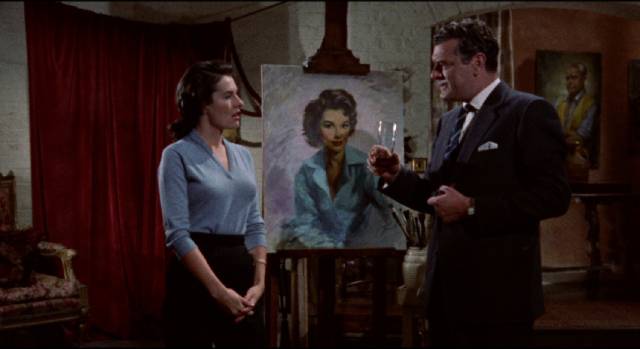
in John Ford’s Gideon’s Day (1958)
I can’t recall when I first saw a John Ford movie, nor what it was (possibly Donovan’s Reef [1963] on television). And I can’t say when I developed an antipathy for his work – that would have come later, after I was consciously aware of individual filmmakers and forming opinions about bodies of work. I do know I had a preference for Howard Hawks (kind of a Stones/Beatles or Keaton/Chaplin thing). I could never quite grasp why Ford was so revered … or should I say deified? I can point to one characteristic which has always rubbed me the wrong way: the forced, brawling masculinity which he so often resorted to, frequently allied to an exaggerated, supposedly charming Irishness which often descends into grating caricature. I’ve also never grasped why The Searchers (1956) is considered by so many critics and historians to be the great masterpiece of American cinema.
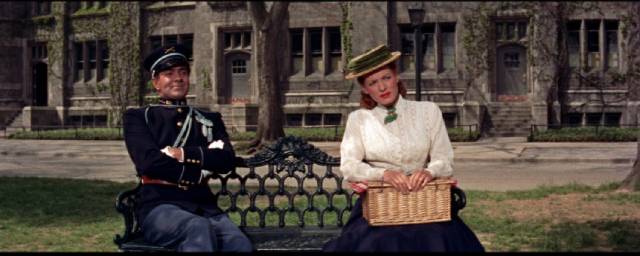
I’ve watched it a number of times, hoping for the light to go on and for understanding to flood in. But it always seems like a rather flabbily constructed tale whose ending is predicated on a massive, unexplained dramatic about-turn for which no groundwork has been laid. For two hours, we have seen nothing but Ethan’s ingrained racism, the hatred which drives him towards a single point – the absolute need to destroy the white girl who has been irredeemably soiled by her years of captivity among the Comanches. And yet at the climactic moment, he suddenly becomes soft and sentimental and returns her safely to her family. What is this trying to convey about racism and hatred? That somehow it’s not really deeply rooted in individuals and thus the societies they inhabit? That it’s all a mistake and a single moment can erase it? The ending of The Searchers makes no sense, yet it embodies Ford’s tendency towards shallow sentimentality.
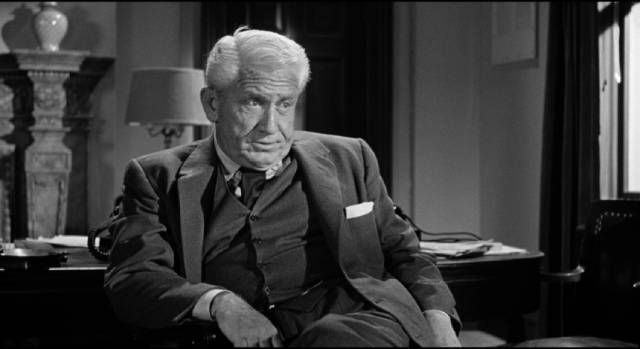
Whatever the original source of my reaction to Ford’s work, it became so deeply embedded that every new encounter was coloured (tainted?) by it. Over the ensuing decades, I’ve come across movies which I do like, but I’m always aware that this liking arrives only after overcoming an initial resistance. Perhaps I’m annoyed by a feeling that this signals some inadequacy in me, an inability to grasp what is apparently so obvious to so many others. Why am I unable to see the greatness? It’s almost as if I’m resentful and reluctant to grant Ford the credit when I do like one of his movies.
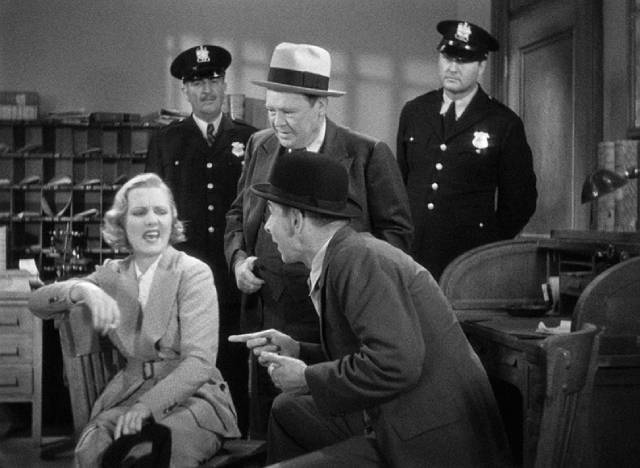
in John Ford’s The Whole Town’s Talking (1935)
And yet at this point, I can list a number of movies I could watch again with pleasure: Young Mr. Lincoln, Drums Along the Mohawk (both 1939), They Were Expendable (1945, perhaps the film which did the most to shift my attitude), Fort Apache (1948) and The Man Who Shot Liberty Valance (1962). It’s been a long time since I’ve seen any of the most prominent westerns and I don’t feel any real urge to revisit them – and should I be embarrassed to say that I’ve never seen The Grapes of Wrath (1940), though I occasionally think I ought to make the effort?[1]
Despite all these conflicted feelings, I recently bought a copy of Indicator’s four-disk John Ford at Columbia 1935-1958 Blu-ray set, which was actually released a year ago. There are no westerns. In fact the set largely consists of movies generally excluded or at least sidelined from the Ford pantheon. One of these in particular was the main reason I bought the set, the completely anomalous Gideon’s Day (1958), not simply one of Ford’s very rare contemporary urban movies, but the only one he ever shot in England.
*
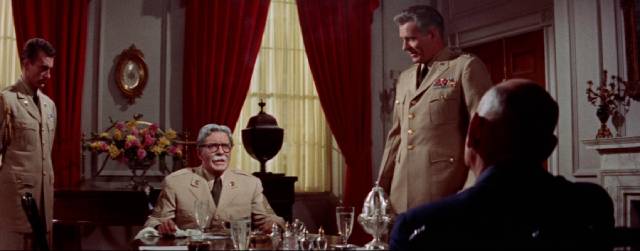
The Long Gray Line (1955)
But before I get to that, a few words about the one film in the set which represents everything about Ford that rubs me the wrong way: The Long Gray Line (1955). This exhaustingly long feature (137 minutes) was adapted from a memoir by a man named Marty Maher, who arrived in the States from Ireland just before the turn of the century and immediately got a menial job at West Point, eventually enlisting and going on to serve five decades as an athletics instructor to generations of cadets. Marty becomes devoted to the institution and its rituals, proud of what he’s a part of yet occasionally torn by what it ultimately represents as his beloved boys go off to die in various wars. Meanwhile, he lives his own life – falling in love with an Irish woman who comes to be a servant in one of the officers’ households, marrying, losing the only child the couple have, losing his wife … in the end left only with his deep emotional connection to the place he has served for so long. The movie ends with the cadets honouring him with a huge parade as his dead wife and father look on with proud indulgence.
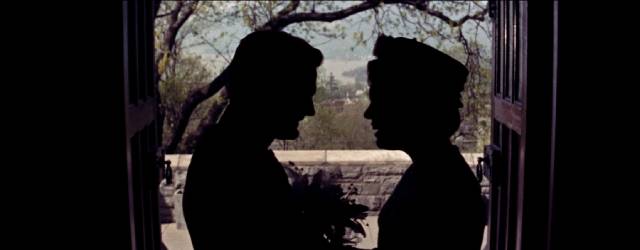
This movie, perhaps more than any other in Ford’s filmography, fetishizes the military as a community deserving of the individual’s subservience and devotion. Despite the cost in lives lost, Marty can’t bring himself to leave, repeatedly re-enlisting. But what makes the movie really unbearable (for me – others seem to admire it) is the insufferable layers of broad Irish shtick under which the story is buried. When Marty first arrives, he’s such a bumpkin that rather than seeming like a lively and cheerful character he’s gratingly off-putting. For a very long opening stretch, Ford stages scenes as tediously unfunny slapstick (the running gag is that as kitchen/wait-staff, Marty is constantly smashing dishes so the he falls increasingly behind in his wages).
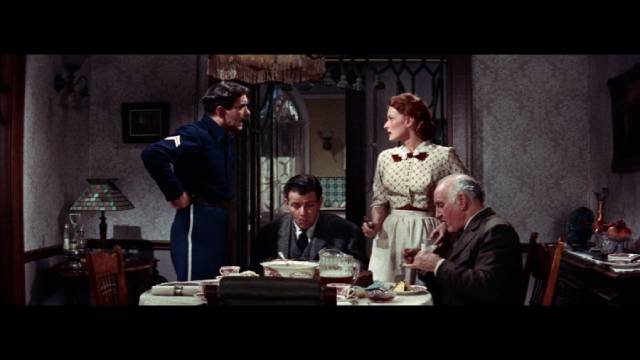
When future wife Mary O’Donnell (Maureen O’Hara) shows up, Marty falls in love at first sight and pursues her relentlessly – but she never says a word, driving him to more and more extreme levels of frustration. This is all supposed to be funny, but quickly becomes more than annoying. The only way to read it is that his attentions are unwanted and he becomes very stalkery; it’s only after he demands that she marry him that she finally speaks (“Yes”) and we learn that her employer, and Marty’s boss, Captain Herman J. Kohler (Ward Bond) had instructed her not to speak to him because that was the way to guarantee he’d be hooked. Which makes no sense because he’s obviously hooked from the moment he meets her and her behaviour amounts to emotional torture … which is somehow supposed to be funny.
All of this nonsense is suffused with what is meant to be Irish charm, but the performances of Tyrone Power and O’Hara are so cartoonishly exaggerated that they become caricatures and any attempts to invest their relationship with emotional depth result in sentimental cliches. Power is so abrasive that there’s never any authentic chemistry between him and O’Hara; we just get narrative signifiers which we’re expected to accept at face value.
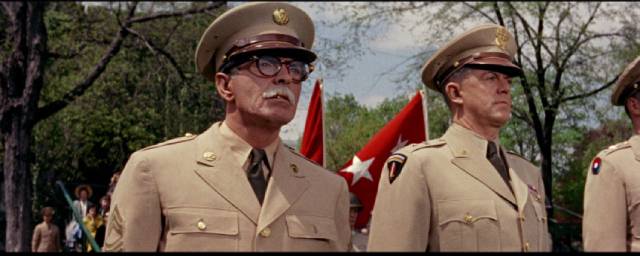
This is compounded when Marty’s father and brother arrive from Ireland and move in. The father (Donald Crisp) is a would-be patriarch who treats his son and daughter-in-law with what reads like contempt as he demands deference from them. And yet we’re supposed to see all this as the charming reconstitution of a family within the larger institution of the Academy. When brother Dinny (Sean McClory) moves to the city and becomes a successful businessman, Dad heaps contempt on him for somehow having abandoned the proper life of an Irish son – whatever that’s supposed to be. It’s all so tedious that I honestly can’t comprehend how Ford expects an audience to love these characters and see them as somehow representative of what’s best about America and the immigrants who have made the country great.
*
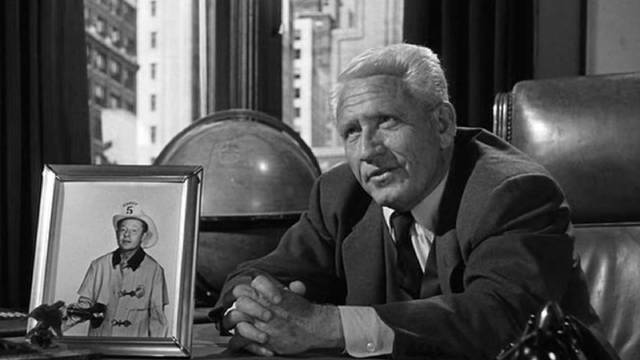
The Last Hurrah (1958)
While this abrasive Irishness runs through quite a bit of Ford’s work (often in the person of Victor McLaglen), probably hitting its peak in The Quiet Man (1952), he was capable of toning it down and giving it a degree of nuance. This is the case in another movie in the set, The Last Hurrah (1958), and it’s better for it, though the film is not without its faults. Another rare contemporary urban story, this follows the campaign of an old-style politician for a fifth term as mayor of an Eastern city. Frank Skeffington (Spencer Tracy) is a paternalistic figure, the kind who treats his constituents with indulgent generosity and his opponents with raw arm-twisting power.
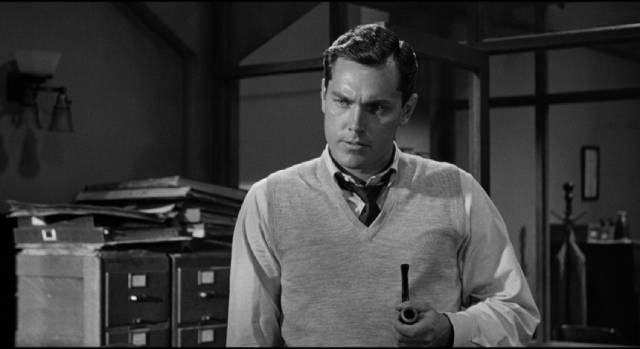
Skeffington comes from Irish immigrants, having grown up in crowded tenements, and he’s disliked for that by the New England WASP establishment. (Seen now, there’s an undeniable echo of the current nativist, anti-immigrant fever of the Right.) He has big plans to tear down the slums he came from and provide improved housing for the underclass – plans opposed by the city’s bankers and reactionary press, who see their own influence dangerously diminished. There are several rousing scenes in which Skeffington confronts his opponents about their prejudices (it’s even mentioned that newspaper owner Amos Force [John Carradine] was a member of the KKK, who disliked the Irish almost as much as Blacks). Skeffington’s coalition is broad – not just the Irish and the working class, but Jews, Blacks, Italians…
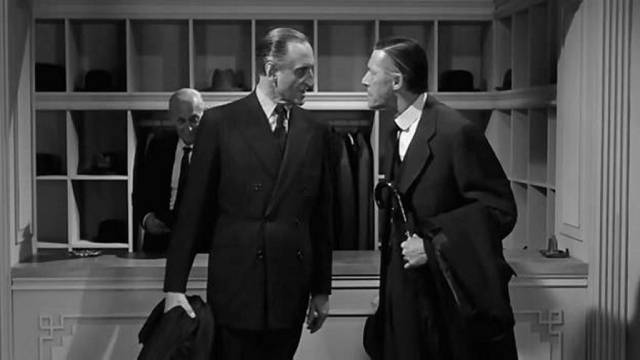
We observe the campaign through the eyes of Skeffington’s admiring nephew Adam Caulfield (Jeffrey Hunter), who is troubled by some of the tactics he sees, though even these touches of corruption seem aimed at positive results. The script by Frank Nugent (from a best-selling novel by Edwin O’Connor) and Ford’s handling of the material stack things in Skeffington’s favour, something reinforced by Tracy’s personal charm as an actor. The darker side of old-school machine politics is brushed over and the opposition is so irredeemably unpleasant (the newspaper owner Force – a loaded name – and the banker Norman Cass [Basil Rathbone], who apparently saw old man Potter in It’s a Wonderful Life [1946] and decided he was a hero to emulate) that it would be churlish to criticize Skeffington’s methods.
This imbalance extends to other aspects of the film. While prescient in its prediction that politics was undergoing a radical change with the arrival of television and a new media environment which was about to transform the relationship between politicians and the electorate, Ford undercuts the point by turning the opposition candidate’s TV appearance into a joke – a miscalculation which in turn makes that candidate’s eventual success on election night baffling. It’s that classic dramatic error of making the protagonist’s opponent so weak that the hero is himself diminished.
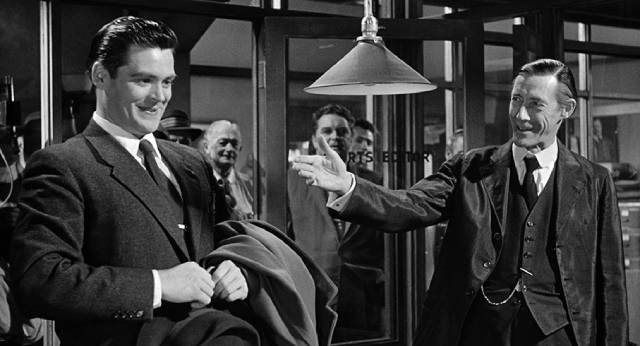
This error derives in part from something sour which infects other aspects of the movie, a distaste in Ford for the younger generation which will inevitably replace the old guys (like himself) whose days are numbered. The opposition candidate, Kevin McCluskey (Charles B. Fitzsimons), is a buffoon, a young empty suit being manipulated by Force, Cass and the other old family patricians in order to dethrone Skeffington. Even worse are Skeffington’s own son, Frank Jr (Arthur Walsh), a vacuous party boy with no interest in politics, social issues or anything else which defines his father’s life – even as his father lies dying, he heads out for a good time. And Cass Jr is even more of a caricature, a lisping idiot whom Skeffington manipulates to put pressure on his banker father. Even Adam is something of a cipher who exists only to provide the audience with an admiring point of view on Skeffington’s personality and actions.
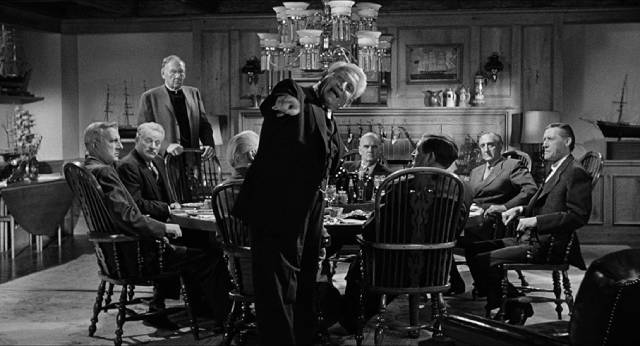
All of this is weighted towards us accepting Skeffington as a great man whose actions are always justified. And yet his opponents are fierce in their dislike of him. Turning them into caricatures does nothing to explain this, particularly since it’s not just the old establishment, but even some who ought to be on his side. The film’s biggest cheat comes when Cardinal Martin Burke (Donald Crisp) comes to Skeffington as he lies dying. Although they grew up together in the slums, the Cardinal has staunchly opposed his old friend’s political actions. He offers to explain why, and for a moment it seems that we’ll finally learn something crucial, gain a deeper understanding of the character. But with all the charm at his disposal Tracy deflects and turns the tables, essentially forgiving the Cardinal for his error in not supporting his childhood friend, and we learn nothing. All these people who so forcefully oppose the mayor apparently do so out of some failure to understand what a great guy he is.
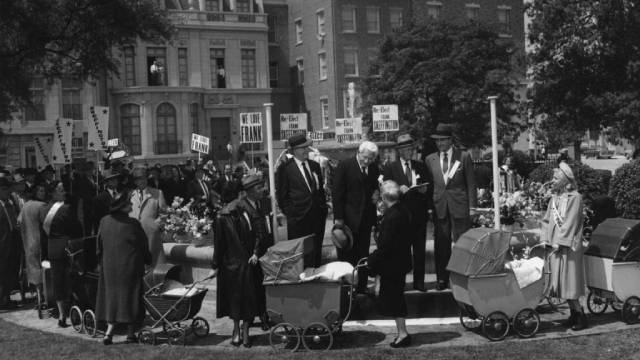
But having said all that, I’ll add that The Last Hurrah is a really entertaining film, packed with engaging performances and scenes staged with great skill – in particular Ford displays a formidable ability to create large-scale sequences full of overlapping action which is always intelligible as emotional registers ebb and flow. This is particularly on display during the wake for Knocko Minihan which becomes a display of Skeffington’s style of personal politicking, and election night at his campaign headquarters when the expected victory gradually gives way to a certainty of defeat. This last is bravura filmmaking, though it might have been even more effective if Ford had set up a more dramatic contest between Skeffington and his opposition.
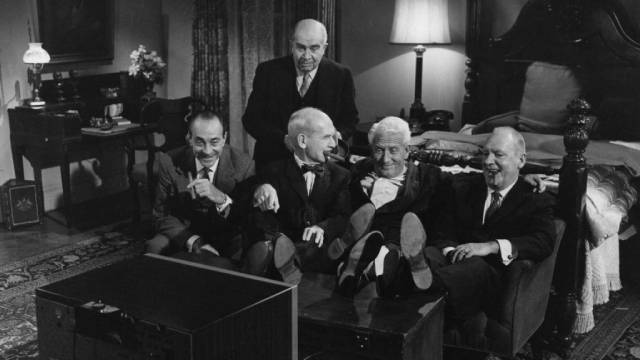
The Last Hurrah is apparently considered by Ford’s admiring critics as a bit of an outlier, tangential to the more canonical works which illuminate his auteurist status. But the other two films in the set seem to have largely been set aside as puzzling non-sequiturs. Although I really don’t aim to be contrarian, I sometimes can’t help it. I really enjoyed these other two films more than many of the movies more central to Ford’s directorial identity; both display his versatility and skill as a craftsman while remaining largely free of his personal obsessions. I can see why this would make them less interesting to those looking for connections with a coherent thematic and stylistic identity (The Long Gray Line fits within that category regardless of its actual value as a movie on its own terms), but looked at purely as movies in themselves, I found them more entertaining and enjoyable than some of Ford’s more admired films.
*
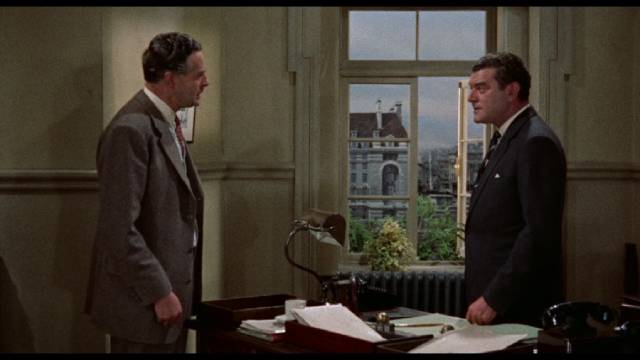
Gideon’s Day (1958)
Ford’s motivation for going to England and making Gideon’s Day (1958) are vague, largely, it seems, because nobody ever bothered to ask him (not that he would have given a satisfactory answer, being notoriously uncooperative with interviewers). Having made a couple of movies in Ireland in the previous few years, he decided to go to England to film a novel by the incredibly prolific pulp author John Creasey (who wrote more than six-hundred novels over four decades under as many as twenty-eight pseudonyms). There’s nothing about the story to indicate Ford’s affinity with the material, except in a very general sense – the episodic narrative contrasts Chief Inspector George Gideon’s professional life at Scotland Yard with a cosy domestic life in a London suburb, suggesting Ford’s interest in issues of individuality and community.
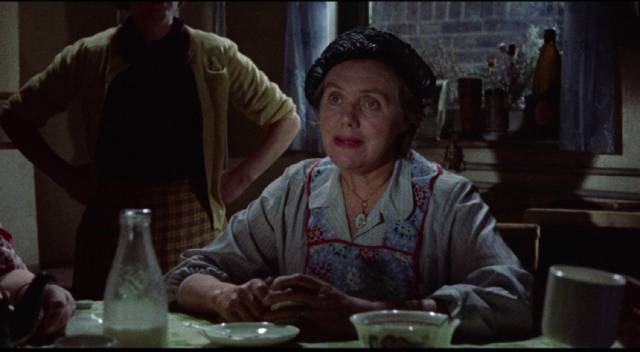
Adapted by T.E.B. Clarke, a long-time contributor to Ealing Studios, the script juggles numerous characters in multiple storylines which eventually weave together as the day unfolds. The tone slips from light comedy to grim tragedy, with Gideon (Jack Hawkins) himself, a dedicated professional, holding it together. The domestic comedy occasionally feels strained, but this somehow adds gravity to the demands of the job and the Chief Inspector’s encounters with escalating violence.
During the day, with his daughter’s violin recital looming that evening (it’s a running concern whether Gideon will make it to the concert), the Chief Inspector must deal with a crooked policeman, a murder, a payroll robbery, an informer who is targeted by the gang he has ratted on, and a climactic robbery with violence by upper class amateurs who elicit far more contempt from Gideon than the petty professionals he deals with every day.
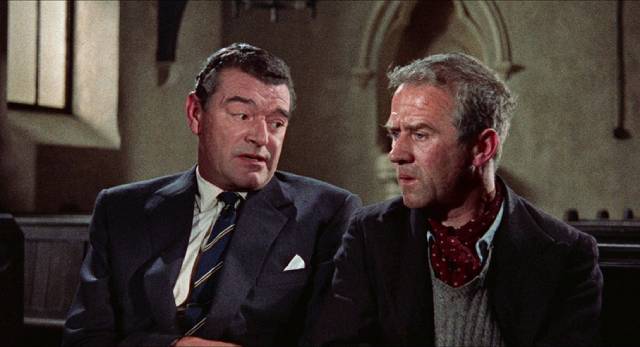
Apart from the deft professionalism of the direction, where is Ford in all this? The film has the look and feel of an Ealing drama from the period, particularly the work of Basil Dearden – The Blue Lamp (1950, also written by Clarke), Pool of London (1951) – as well as Charles Frend’s The Long Arm (1956), which also starred Hawkins as a Scotland Yard official. The auteur theory is predicated on a filmmaker’s work displaying some kind of overall consistency in terms of subject, theme and creative approach. The more a director shows that kind of consistency, the more problematic are works which fall outside of those parameters. In Ford’s case critical opinion labels something like Gideon’s Day “minor”, of little interest because it doesn’t add anything to the auteur’s profile. And yet, it’s a very well crafted movie, nicely shot by Freddie Young, with a huge cast of British character actors (including a nice debut performance by Anna Massey, who followed it up with Michael Powell’s Peeping Tom [1960]). Until this release, the film had virtually disappeared because it doesn’t really fit into Ford’s filmography; it would probably be much better known if it had been directed by, say, Basil Dearden.
*
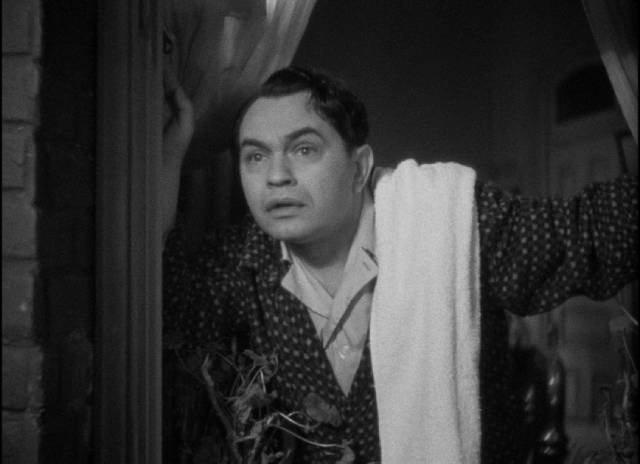
in John Ford’s The Whole Town’s Talking (1935)
The Whole Town’s Talking (1935)
What, if anything, does it say about auteurism that the most enjoyable movie in the set is the one which seems to reveal the least about Ford the auteur? The Whole Town’s Talking (1935) was a job for hire for which Ford was loaned by his studio, Warner Brothers, to Columbia, a studio which had its own signature in-house auteur, Frank Capra. With a script co-written by frequent Capra collaborator Robert Riskin, this film bears many similarities to Capra’s own comedies, though it eventually becomes much darker. In addition to the writer, the presence of Jean Arthur as the female lead reinforces the Capra connection, while Edward G. Robinson in the lead injects grittier associations with early ’30s Warner gangster movies (perhaps not surprising as the story it was based on was by W.R. Burnett, best-known as the writer of Robinson’s breakthrough, Little Caesar [1931]). The ultimate effect is a syncretic mix of elements and influences within which Ford seemingly disappears … yet the movie is a superlative example of craft, and the closest Ford ever came to outright screwball comedy. If it’s true that he had little interest in the project, then it’s a fine tribute to his professionalism if not an example of his auteurist art.
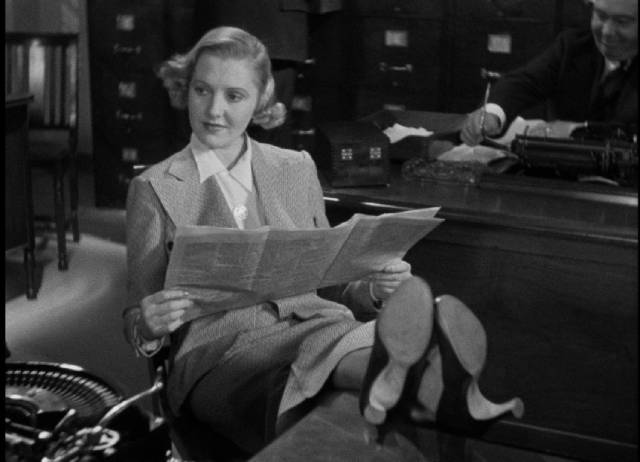
Robinson plays a dual role, which affords the camera department under veteran cinematographer Joseph H. August to display their own remarkable technical skills; while it’s not difficult to see how some of the doubling was achieved (with process photography), there are many shots which are so seamless that they seem almost inexplicable – how does smoke blown by Robinson on one side of the screen cross over to pass in front of him on the other side? It’s a wonderful reminder of the ingenuity of technicians working decades before the advent of computers and digital effects.
We’re first introduced to Robinson as Arthur Ferguson Jones, a dedicated, self-effacing clerk working in a corporate office. On this particular morning, a faulty new alarm clock causes him to arrive late for the first time in his career, a disconcerting breach of routine which signals the imminent arrival of even bigger problems. Until now, Arthur has had a secret crush on co-worker Wilhelmina Clark (Jean Arthur), a brash woman with an unconcealed contempt for the petty rules of office bureaucracy. It’s Wilhelmina who notices the striking resemblance of Arthur to a photo in that morning’s paper – a picture of murderous gangster “Killer” Mannion, who has just escaped from prison.
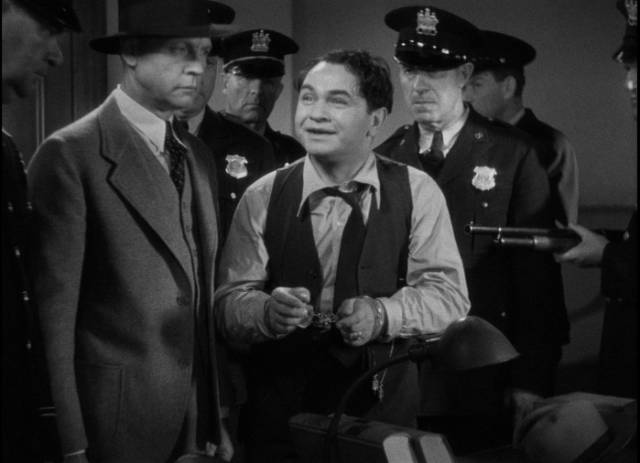
The disturbance caused by this discovery disrupts office routine and breaks the invisible barrier from behind which Arthur has been admiring Wilhelmina. They end up having lunch together, during which a man at a nearby table (Donald Meek) also notices the resemblance and calls the cops. Arthur and Wilhelmina are arrested at gunpoint and the police lean hard on the terrified, protesting Arthur, while Wilhelmina leans into the situation by playing the gangster’s moll to the hilt. It takes a while to convince the police that they’ve made a mistake, but by then the story has hit the papers and Arthur is famous, commissioned to lend his name to a series of articles about Mannion. But there’s still a risk he’ll be mistaken for the gangster and shot on sight, so he’s given a letter identifying him which he can show whenever confronted.
All of this gets into the papers and Mannion sees an excellent opportunity. He shows up at Arthur’s rented room and uses threats to gain the clerk’s cooperation; Arthur will carry the letter during the day, but then turn it over in the evening so that Mannion can continue his crimes with a get-out-of-jail-free card in his pocket. While the stress of this hangs over Arthur, his everyday life is rapidly changing – his boss takes advantage of all the publicity and Arthur gains status at the office, which helps him to find the courage to begin a relationship with Wilhelmina.
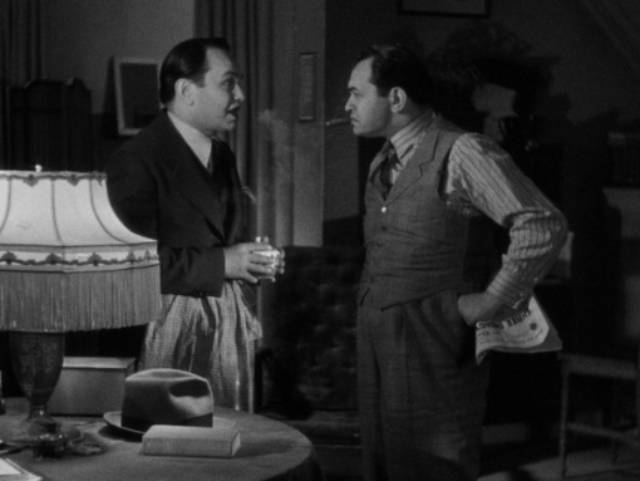
The complications pile up, with the threat of violence escalating until Arthur, in order to extricate himself and Wilhelmina from Mannion’s plans, has to find the cold-blooded killer in himself, essentially becoming his doppelganger in order to defeat that darker self. Ford orchestrates this tonal shift from comedy to dramatic violence with an assured hand, but what holds the film together is the terrific acting of Robinson, who embodies the differences between Arthur and Mannion with the subtlest of gestures and changes of expression. His Mannion hearkens back to his Warner gangsters, arrogant and casually violent, while his Arthur reveals an unexpected facility with verbal and physical comedy. In this, he’s ably supported by Jean Arthur whose Wilhelmina has all the earmarks of the tough, independent women she would go on to play for Capra and Howard Hawks.
If Columbia had assigned The Whole Town’s Talking to Capra, it may well have had a softer centre, a more sentimental treatment of the main character; if somehow Hawks had been involved, it might have been faster paced, snappier, with a more cynical edge. So Ford, disinterested though he might have been, apparently did leave his mark on the material – it’s just not the kind of material he would deliberately choose as he gained more power and influence in the business. For my taste, this product of the studio system is more enjoyable, even preferable, than some of his more personal work – in this case, again for my taste, Ford the hired hand tops Ford the auteur.
*
As always, Indicator’s four-disk set is exemplary. The transfers are all excellent, as are the soundtracks, and each disk has multiple extras. There are brief introductions to each movie by Leonard Maltin, an obvious Ford admirer (though he does warn viewers that you need a high tolerance for blarney when you watch The Long Gray Line); each disk also has a brief video essay by academic and historian Tag Gallagher, which I found occasionally a bit too esoteric. There are commentaries on The Long Gray Line and Gideon’s Day, interviews and featurettes, and a booklet for each film with essays, interviews and excerpts from contemporary reviews. While I remain somewhat ambivalent about Ford, I thoroughly enjoyed the set and the light it throws on various aspects of his career.
_______________________________________________________________
(1.) After writing this post, I did force myself to sit down and watch The Grapes of Wrath, anticipating yet more thick sentiment. What I got was something like a revelation. For the most part, Ford kept his excesses in check (though Ma Joad [Jane Darwell] is a bit too heavily weighted with nobility); with formidable aid from cinematographer Gregg Toland, Ford balances a sense of poetry with a stark (at times Expressionist) depiction of the Depression, reminiscent of the great documentary photographers of the period, but here given added life by committed performances from a great cast. Henry Fonda as Tom Joad and John Carradine as Jim Casy were never better, while even the smallest bit parts are full of authentic life. But what really surprised me, given that the events depicted were barely a few years in the past and that Ford was obviously a conservative, was the film’s politics (though I understand that they have been toned down from Steinbeck’s novel, which I haven’t read). Openly critical of capitalism, of the police, of a system which despises its own victims, it suggests nothing less than a form of socialism as the answer to the appalling failures of American society – the only viable note of hope comes when the Joads find their way to a self-governing camp established by the Department of Agriculture, and not surprisingly the local police and business interests are determined to destroy this small beacon with violence. Rooted in its particular time and place, it was startling (and perhaps a bit depressing) to see how pertinent the film’s depiction of political and social conflicts is to the current situation in the States. (return)
Comments
I love John Ford! The Amazon site does not indicate the playing region code of the set, and the UK source list region B; where in the USA can I purchase a Region Free or a set that will play in the States?
Unfortunately the Indicator set is region B and there’s no comparable North American edition. The Whole Town’s Talking and The Last Hurrah were both released on Blu-ray a few years ago by Twilight Time, but it doesn’t appear that either The Long Grey Line or Gideon’s Day have been given a proper region A release.
However, multi-region players are easy to find and quite cheap, so it’s really easy to get around the annoyance of region coding.